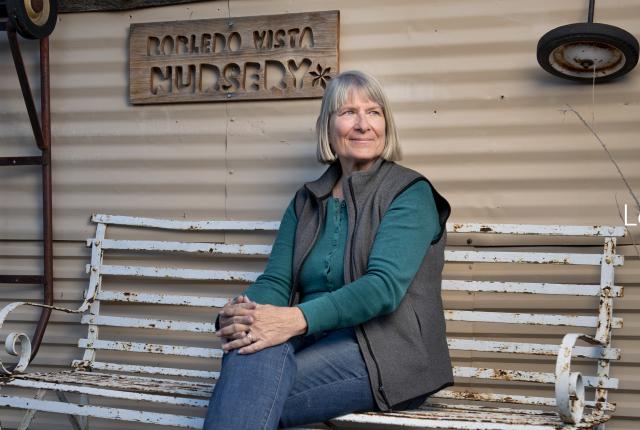Marcy Scott, co-owner of Robledo Vista Nursery with her husband, Jimmy Zabriskie, in Las Cruces, has been a passionate birder for almost 40 years. So it’s not surprising that her two pursuits came together in a 2015 book, Hummingbird Plants of the Southwest (Rio Nuevo Publishers), which investigates the drama playing out between hummingbirds and wildflowers.
WHEN I FIRST MOVED TO LAS CRUCES from Ohio, I was gobsmacked by all the hummingbird species and how accessible they were. Here in the Southwest, we have so much open space. If you plant some flowers that attract hummingbirds and put up feeders, you’re likely to see them.
I started to realize there’s an interplay, a kind of ballet going on, between hummingbirds and wildflowers. Flowers are trying to yank hummingbirds out of the sky to be pollinated, and hummingbirds need nectar, their go-juice, during migration. The very narrow tubular flowers, in bright reds and deep pinks, evolved to cater to the hummingbird pollination.
Hummingbirds’ southern migration is a lot earlier than most birds’. It starts in late June or early July. Some are coming from breeding grounds as far away as Alaska and Wyoming. It’s an amazing funnel of movement. While moving south, they’re stopping in the high mountains, where, hopefully, summer monsoons have turned meadows into nectar bars, with lots of wildflowers—the red penstemons, skyrockets, fire pinks, and paintbrushes.
Hummingbirds have amazing memories, and they can spot red flowers from at least a quarter mile away. If they find a good habitat, they will stop, refuel, and return year after year. If everything’s working, birds can fly from one mountain range to the next and find the flowers they need for migration. But sometimes there’s a glitch—a catastrophic wildfire or terrible drought—and the flowers don’t materialize. It’s important to have some backup places. If enough people create backyard gardens full of their favorite flowers, there’s a nearly continuous corridor for these birds. My goal is to have enough habitat in place to supply what hummingbirds need long after I’m gone. To me, that’s a neat legacy.—As told to Christina Selby


